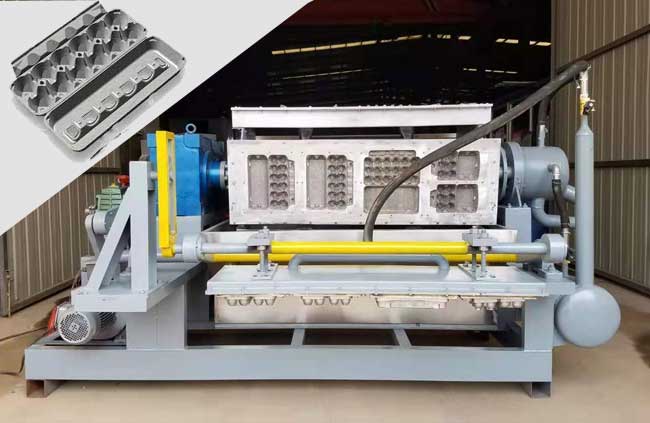Pulp Molding Introduction
Pulp molding is a sustainable and eco-friendly packaging solution that has gained immense popularity in recent years. It involves the use of natural, renewable, and biodegradable materials such as waste paper to create a wide range of products such as trays, cups, and egg cartons. The process of pulp molding involves a combination of material preparation, molding, drying, and finishing, with the core of the process being the pulp molding machine. The design and operation of the machine play a critical role in ensuring the production of high-quality products while minimizing waste and maximizing efficiency. In this article, we will delve into the importance of pulp molding machine design in the production process, and the various factors that manufacturers need to consider to ensure optimal performance and maximum returns on investment.
Pulp molding machines come in a variety of designs and configurations, and selecting the right machine is crucial for the successful implementation of a pulp molding production process. The design of the machine determines the efficiency of the production process, the quality of the final product, and the machine’s maintenance requirements. The following sections will provide insights into the key considerations that manufacturers need to keep in mind when selecting a pulp molding machine for their production process.
Machine Configuration
Pulp molding machine design plays a critical role in the efficiency and quality of the production process. A well-designed machine must have a configuration that ensures smooth and uninterrupted operation, while also delivering high-quality molded pulp products.
One of the primary components of a pulp molding machine is the mold tool. The mold tool consists of a die and a transfer mechanism that moves the molded pulp products to the drying system. The mold tool is typically made of aluminum or brass, which are durable and long-lasting materials that can withstand the rigors of the production process.
The transfer mechanism of the mold tool can be either manual or automatic. Manual transfer mechanisms rely on the operator to move the molded pulp products from the mold to the drying system. In contrast, automatic transfer mechanisms use a conveyor or robotic arm to transfer the molded products to the drying system. Automatic transfer mechanisms are more efficient and faster, but they are also more expensive.
Another critical component of the pulp molding machine is the drying system. The drying system is responsible for removing moisture from the molded pulp products, which is essential for producing high-quality and durable products. The drying system can be either natural or mechanical, depending on the specific needs of the production process.
Natural drying systems use ambient air to dry the molded products. In contrast, mechanical drying systems use hot air, infrared radiation, or a combination of both to remove moisture from the products. Mechanical drying systems are typically more efficient and faster, but they also consume more energy than natural drying systems.
The machine’s pulp stock preparation system is another crucial component of the pulp molding machine design. The pulp stock preparation system is responsible for preparing the pulp stock, which is the raw material used in the production process. The system includes a pulper, refiner, and screening equipment, which work together to prepare the pulp stock for molding.
The control system is another critical component of the pulp molding machine. The control system is responsible for monitoring and controlling the various components of the machine, including the mold tool, transfer mechanism, drying system, and pulp stock preparation system. The control system ensures that the machine operates smoothly and efficiently, and it can also provide valuable data for optimizing the production process.
In conclusion, the configuration of a pulp molding machine is critical to the success of the production process. A well-designed machine must have a mold tool, transfer mechanism, drying system, pulp stock preparation system, and control system that work together seamlessly to produce high-quality and efficient products.
Types of Pulp Molding Machine Designs
There are several different types of pulp molding machine designs, each with their own unique advantages and disadvantages.
Reciprocating Machine Design Reciprocating machines are designed to move the molds back and forth, creating the desired shape of the pulp tray. These machines are typically smaller and more affordable than other designs, making them a popular choice for smaller operations or those just starting out. However, they may have lower production capacity and slower cycle times compared to other machine designs.
Rotary Machine Design Rotary machines rotate the molds in a circular motion to create the desired shape of the pulp tray. These machines are known for their high production capacity and fast cycle times, making them a great option for larger operations or those with high demand. However, they can be more expensive and require more maintenance compared to reciprocating machines.
Multi-Sided Machine Design Multi-sided machines can have up to 12 sides, allowing for more molds to be used at once and increasing production efficiency. They are known for their ability to create complex shapes and designs, making them a great option for products with intricate details. However, these machines can be more expensive and require a larger operating space compared to other machine designs.
Understanding the advantages and disadvantages of each machine design can help you choose the best option for your specific production needs.
